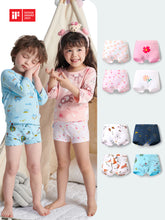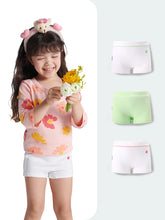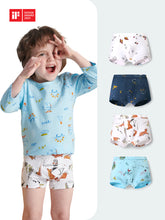Exposure of Kids' Underwear Fabrics
I. Overview of Market Materials
The materials used for kids' underwear on the market encompass a variety of options, including but not limited to polyester, acrylic, and nylon. These are all examples of chemically synthesized fibers that offer strong plasticity and high cost-effectiveness.

II. Drawbacks of Chemically Synthesized Fibers
Despite their advantages, these fibers also exhibit significant shortcomings:
- Poor comfort
- Prone to static electricity
- Easy to wrinkle
- Not breathable
Due to these issues, chemically synthesized fabrics can easily irritate kids' skin. Therefore, it is advisable to avoid garments made primarily from these materials when selecting underwear and other close-fitting clothing for kids.
III. Recommendation: Cotton as the Primary Fabric

We recommend cotton, a natural fiber, as the primary fabric for kids' close-fitting clothing. Cotton boasts numerous advantages:
A. Hygroscopicity

Cotton fibers have excellent hygroscopicity, meaning they can absorb and retain moisture well. This keeps the fabric in moisture balance, providing a soft and comfortable feel against the skin.
B. Hygiene
Being a natural fiber composed primarily of cellulose, cotton is skin-friendly. Pure cotton fabrics do not irritate the skin and exhibit good hygienic properties.
C. Thermal Insulation
Cotton fibers are poor conductors of heat and electricity. Their porous and elastic nature traps air between the fibers, providing good thermal insulation.
D. Heat Resistance
Pure cotton fabrics have good heat resistance, withstanding temperatures below 110°C without damaging the fibers.
E. Alkali Resistance
Cotton fibers are resistant to alkalis, making them suitable for cleaning, disinfecting, and various processing techniques.
IV. Disadvantages of Cotton and Solutions
However, cotton also has some disadvantages:
- Easy to Wrinkle: Cotton fibers have poor elasticity, causing garments to wrinkle easily.
- Shrinkage: Pure cotton fabrics have a shrinkage rate of 2% to 5%.
- Deformation: The porosity of cotton fibers can cause garments to deform easily.
To address these shortcomings, researchers have developed spandex, an elastic fiber known as "polyurethane fiber."
V. Advantages of Spandex and Its Blend with Cotton

Spandex offers several benefits:
- Strength 2 to 3 times higher than latex threads
- Finer linear density
- Good resistance to chemical degradation, acids, alkalis, sweat, seawater, dry cleaning, and abrasion
Blending spandex with cotton effectively addresses issues such as easy wrinkling, shrinkage, and deformation. This combination makes garments more comfortable to wear and improves their appearance.
Conclusion
In conclusion, when selecting underwear fabrics for kids, it is crucial to consider both the advantages and disadvantages of different materials. While chemically synthesized fibers may offer cost-effectiveness and plasticity, they often lack comfort and breathability. Cotton, on the other hand, is a natural and skin-friendly fiber with excellent hygroscopicity, hygiene, thermal insulation, heat resistance, and alkali resistance. However, it also has some disadvantages, such as easy wrinkling, shrinkage, and deformation. By blending cotton with spandex, we can effectively address these issues and create garments that are both comfortable and durable for children to wear.


















